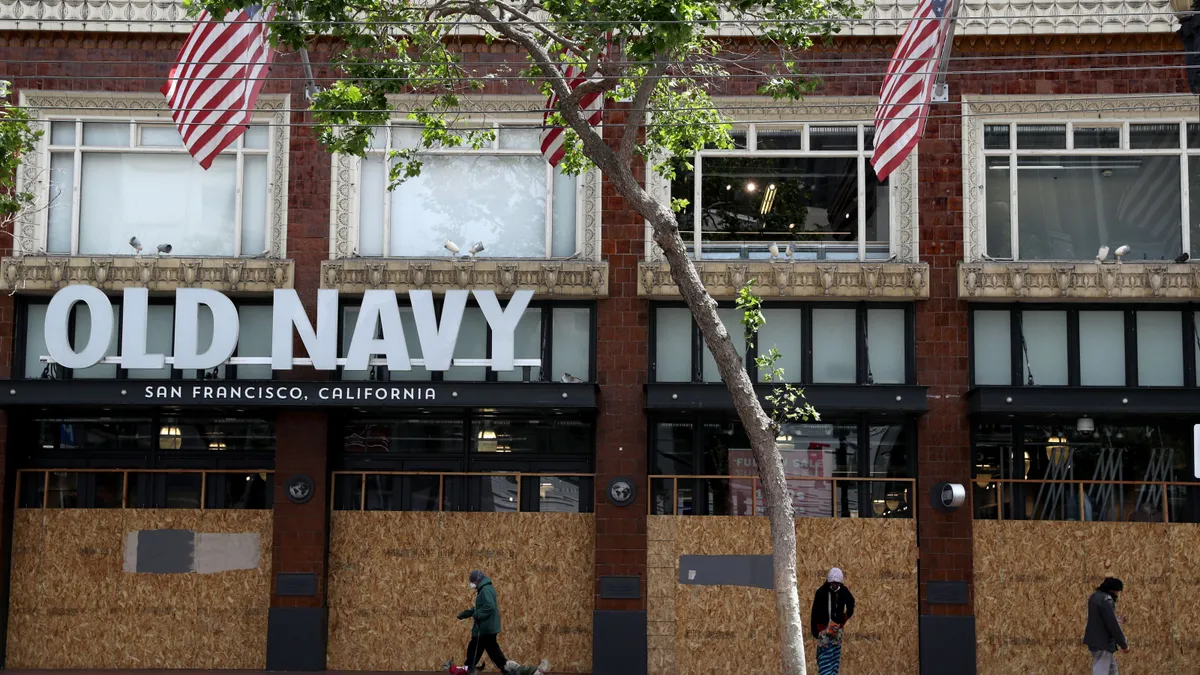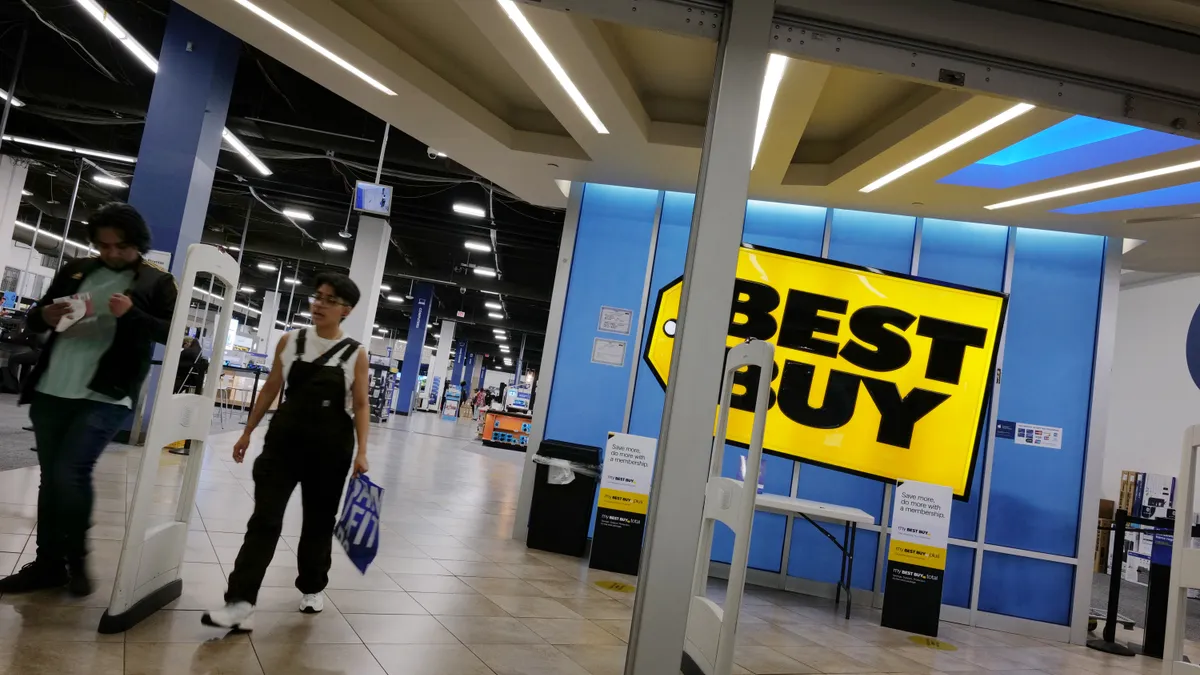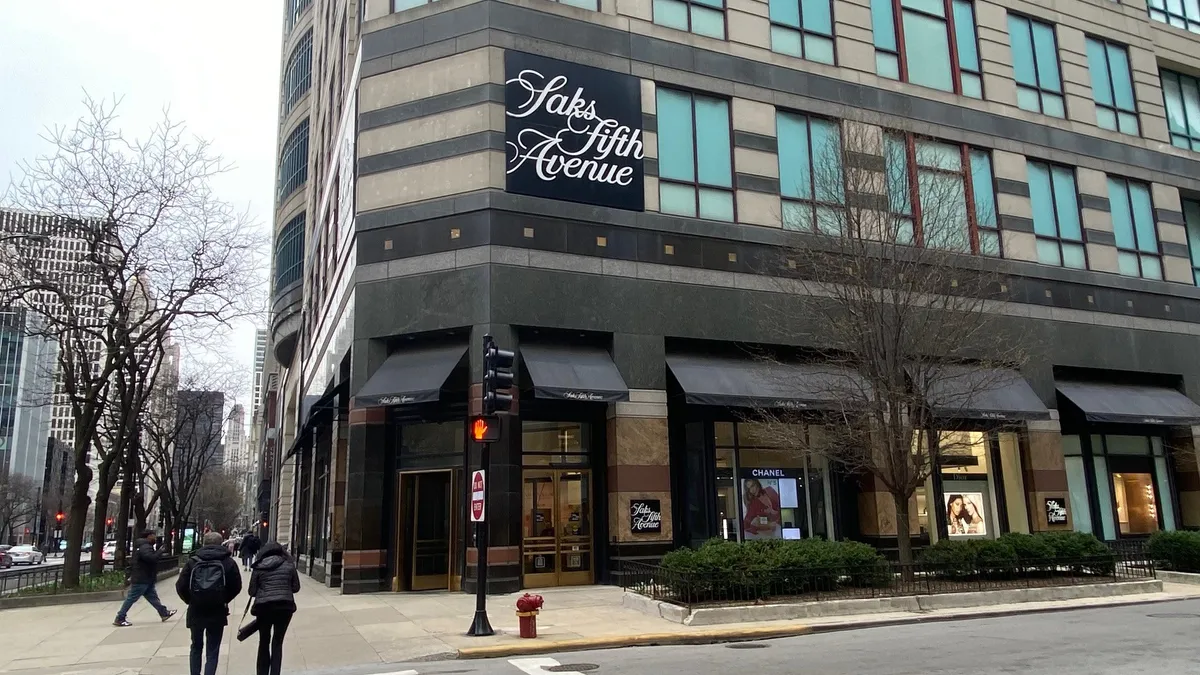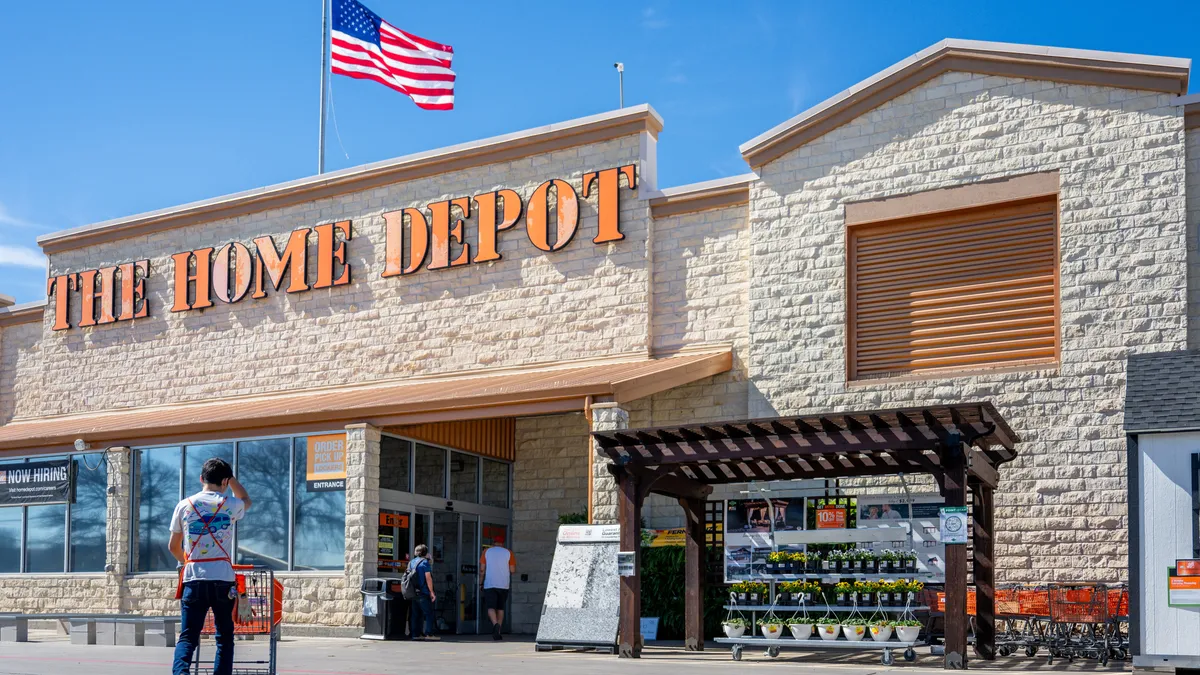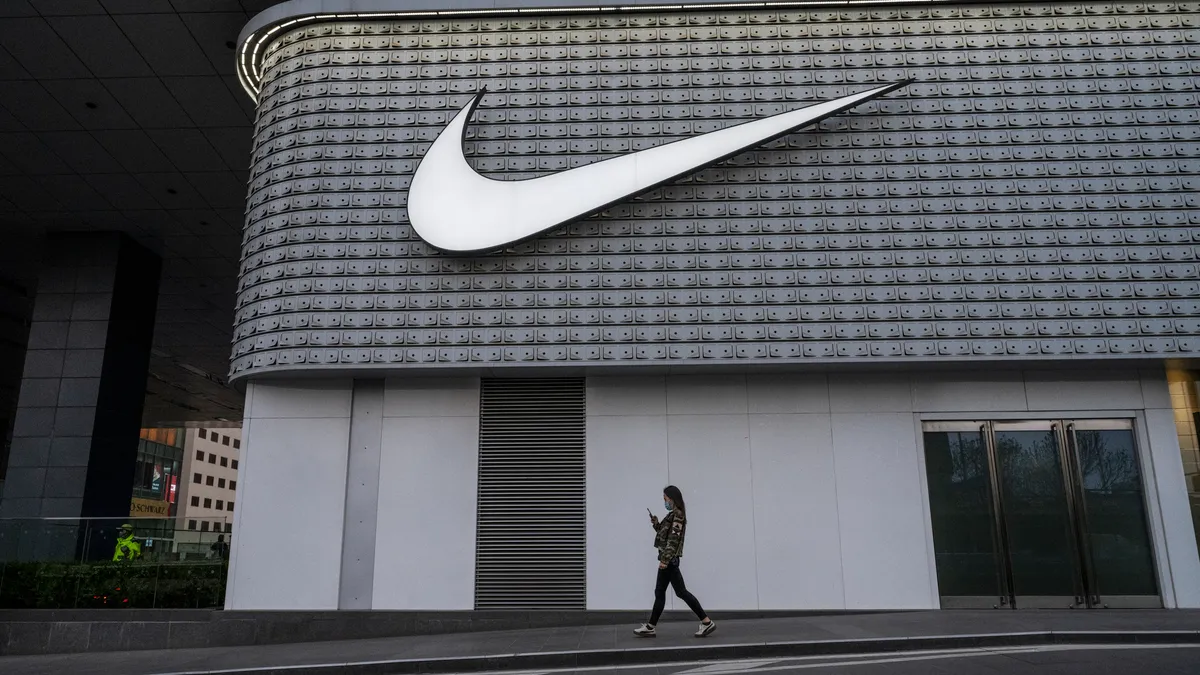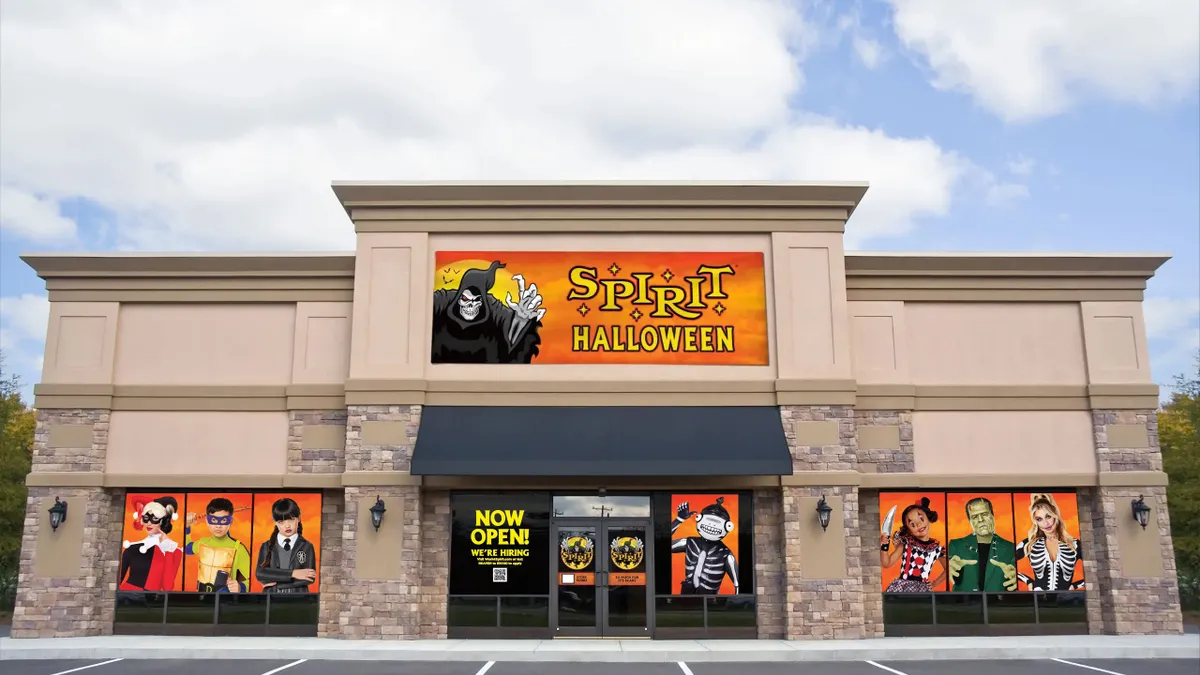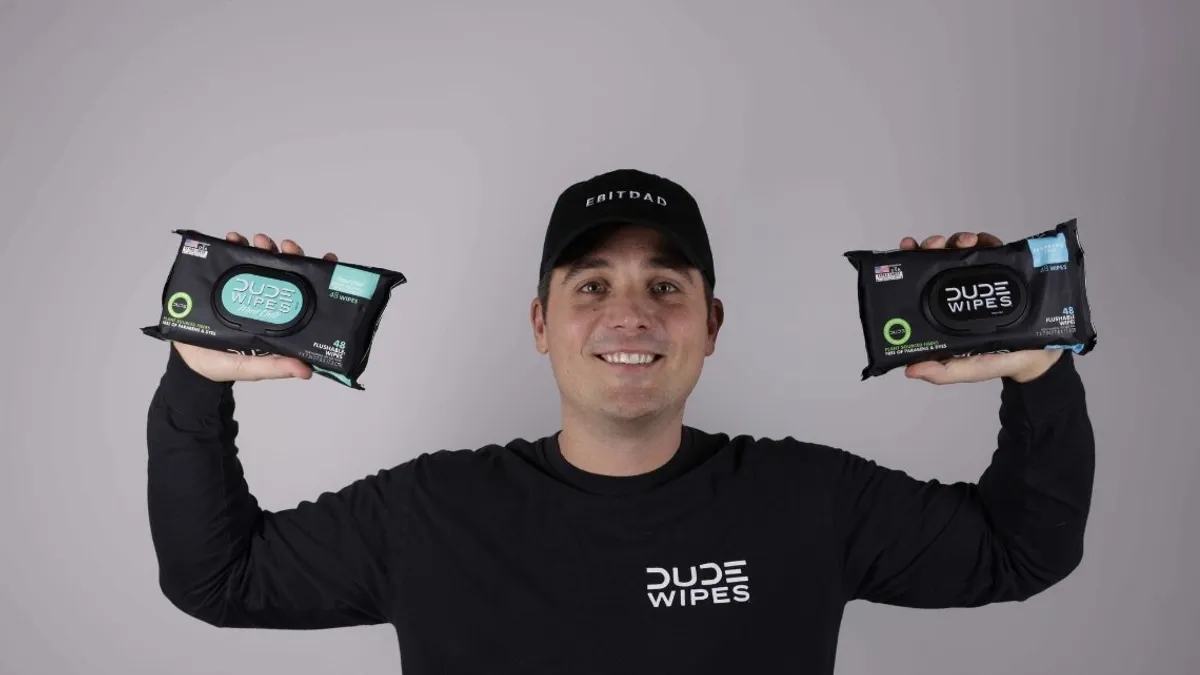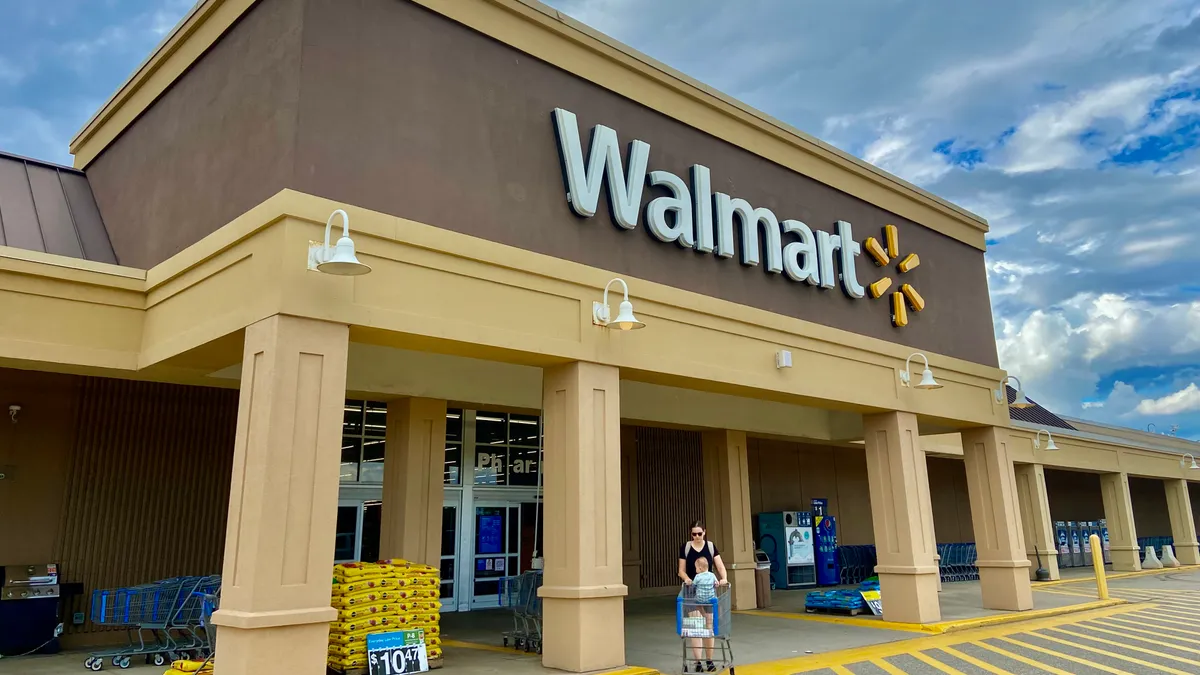A half century ago, Ralph Lauren began to build his fashion house based squarely on his own high standards of quality and style, and, arguably, on his unique interpretation of an American ethos: a British preppy-ness with a cowboy flair—upscale yet accessible, appealing to everyone from country club golfers to celebrities on the red carpet and hip hop stars like Kanye West.
This style carried Lauren and his company far. In 2007, revenues were $4.2 billion, ballooning to $7.5 billion in 2014 and holding steady. As of the first quarter of last year the company ran 466 freestanding stores globally, totaling some 3.6 million square-feet, plus 536 concession-based shop-within-shops and 10 e-commerce sites. In a nod to the brand’s ability to interpret “Englishness,” none other than Wimbledon itself tapped Ralph Lauren to be its official outfitter in 2006.
In short, according to Howard Davidowitz, chairman of retail consulting and investment banking firm Davidowitz & Associates Inc, Ralph Lauren is “the most powerful apparel brand in history, end of sentence.”
Even so, the company is suffering: sales are faltering and profits, hampered by huge, underperforming stores worldwide, have fallen 50% in the last two years; its market value is now at $7.9 billion, from $16 billion just three years ago.
That has led CEO Stefan Larsson, who arrived last fall from Old Navy, to announce the company’s “Way Forward” plan in June, which will see the closure of 50 underperforming stores (about 10% of its fleet), corporate job cuts of some 1,000 positions, and a new focus on its best-selling brands. (A Ralph Lauren spokesperson in an email referred Retail Dive to a transcript from its June 7 investor meeting and declined to address specific questions beyond that.)
“[W]ith our Way Forward Plan, we will build on our strengths, refocusing on our core brands and instilling a financial discipline that is highly focused on return on investment,” Larsson said in a statement.
The blueprint is underpinned by common sense moves, including one to speed up its fashion-to-manufacture timeline from 15 months to nine, that experts tell Retail Dive are “no brainers” and a long time coming. But it’s not clear whether some ideas, like a drastic pullback on wholesale, are smart, or others, like the speed-up in the supply chain, are enough. Plus, no one yet knows whether Larsson is the man for the job, or whether he or Lauren understand the dimensions of today's consumer demands.
The early days
Ralph Lauren cut his teeth in retail the old-fashioned way. As a young man he worked in sales at Brooks Brothers and at a New York tie-maker, but left to open his own business in 1966 when the company rejected Lauren’s idea for a wide European style tie, inspired by one worn by movie star Douglas Fairbanks Jr.
That first necktie effort was the beginning of the “Polo” brand and Lauren’s sartorial empire. First specializing in menswear, Lauren then expanding to womenswear in 1971 after winning the prestigious Coty award. He then took his vision inspired by classic Hollywood stars to the silver screen, working with costume designers to outfit Robert Redford in 1974 movie adaptation of "The Great Gatsby," which won an Oscar for costume design, and Diane Keaton in the title role of Woody Allen’s 1977 "Annie Hall." According to the Guardian, Lauren, along with Giorgio Armani and Calvin Klein, was part of the first class of designers that became household names in the '80s, expanding into housewares and creating an immersive experience in his Manhattan flagship store.
“Ralph Lauren has always been good at listening to whispers before they become roars,” Davidowitz said about Lauren's keen eye for fashion trends.
Now, Ralph Lauren Corp. includes a stable of brands including Polo Ralph Lauren, Ralph Lauren Purple Label, Ralph Lauren Collection, and Black Label, each incorporating an overarching sense of classic-yet-vogue.
But its size may be a problem. While sales have risen 7% in the last three years, inventory bloated by 26% in that time, forcing promotions at department stores and a glut of merchandise at the company’s outlet stores and off-price retailers. Ralph Lauren said this month that it expects net revenues to decline in the first quarter at a mid-single digit rate and that its fiscal 2017 Q1 operating margin would be approximately 110 to 160 basis points below the comparable year-ago period.
“In short, we have not focused enough on nor evolved enough the core of what made us great in product, marketing and the shopping experience,” Larsson said during a conference call with analysts last month. “In addition, our underlying business engines are not running at full speed. We also have an inefficient cost structure and an organization that's not nimble enough in the marketplace.”
A question of leadership
Over the decades, Ralph Lauren came to lean on highly effective managers at his right hand, who balanced his fashion and merchandising ideas with a tight rein on the less flashy, but no less important, business side. Two men over the years have been particularly helpful, experts say.
Fresh off his 1970 Coty Award win and the successful launch of his now-iconic Polo shirt, Lauren found himself struggling with his company's finances and logistics. "I almost blew my business," Lauren reportedly told Forbes about the move. "I wasn't shipping on time and had problems delivering.”
After injecting $150,000 of his life savings into the company to save it, Lauren recruited Peter Strom from his position at Norman Hilton to be his business partner, who agreed to join for a 10% equity stake in the business. After Strom came on the company switched from direct manufacturing to largely dealing with licensing deals, which gave Lauren more room to focus on marketing and design. Strom retired from the company in April 1995.
After Strom retired, Lauren brought on Roger Farah in 2000, Ralph Lauren’s longtime operations chief and executive vice chairman. Understanding both the brand’s rise in the past 10-plus years, and its recent stumble, means appreciating the role of Farah, say Davidowitz and Mark A. Cohen, director of retail studies at Columbia University's graduate school of busiiness.
Farah, they say, had decades of experience at department stores including Macy's, is widely credited with transforming the already strong U.S. brand into a global powerhouse. Like Strom, Farah was expert in enabling Lauren's visions (Lauren has famously said: “I don’t design clothes, I design dreams”) while holding a lid on costs and keeping operational decisions rational. Farah left the company in 2014 for Tory Burch, who tapped him to be co-CEO.
“Losing Roger Farah was a tragedy for this company,” Davidowitz told Retail Dive. “He was perfectly suited and had performed magnificently, and maybe Ralph Lauren is accountable for that mess. His job was to motivate Roger Farah and his top people. Since Farah left they’ve wasted three years, and that’s a lifetime in this business. A month is a lifetime. He’s been off track, and a lot of things happened in those years. One is Amazon, two is athleisure-wear and fast fashion, and the department stores are wrecked.”
Analysts at investment bank Cowen & Co. project that Amazon, which this year launched a suite of private label apparel and accessories goods, will leapfrog Macy’s to become the number one U.S. apparel retailer by 2017. Meanwhile, fast fashion has brought trendy styles swiftly and inexpensively to consumers, hurting higher quality, higher priced apparel brands like Ralph Lauren. Once more, many consumers are more inclined to wear workout leggings than pretty polos on the street, hardly an expression of Ralph Lauren's idea of "elegance." All these trends have lead the company to look to outside help to turn things around.
Is Larsson the guy to turn it around?
Experts say that the jury is simply out about Larsson, or his ability to work with Lauren, as Strom and Farah did, to impose a rational path to growth and accomplish the goals set out in the “Way Forward” plan.
Under Larsson, Old Navy prospered, outpacing its sister brands and benefitting from Larsson’s moves to speed up the supply chain. Although the brand has stumbled since Larsson's departure, Old Navy reported same-store sales growth for many quarters, and in the past four years has accumulated $1 billion in annual sales over four years, a major turnabout.
Even with this experience, Cohen and Davidowitz say that Larsson’s move to scale back wholesale activity within department stores presents the company with a tricky problem—while department stores have resorted to promotions to move merchandise in the huge spaces dedicated to Ralph Lauren’s brands, the fact is that they’re also a significant source of profits, pulling in 44% of the company’s revenue, according to Davidowitz.
“This is not going to be a straight forward thing to do because the department stores are going to have things to say about this, and they’re not easy to deal with, and this guy Larsson has no experience in wholesale,” Davidowitz told Retail Dive. “He put together all these numbers and it sounds okay, but what if sales start to drop much faster than he projects because the department stores stop cooperating with him? They have to do all this hand in hand—they’re the supplier, they’re not in charge.”
Ralph Lauren’s plans to close stores is also a consequence of opening too many large stores in less-than-ideal locations, says Davidowitz. It’s also evidence, he says, that the company struggles with store operations. But Shelley E. Kohan, VP of retail consulting at store analytics firm RetailNext, does think that Larsson is up to the job, noting that Lauren has had the right instincts in the past about who could help him run things.
“I think Ralph Lauren is one of the most brilliant businessman not just in our industry but in the world,” she told Retail Dive. “He’s done an amazing job on the marketing and product side. In today’s challenging environment I think all of us should trust the instincts of Ralph Lauren, who has built this business for 50 years. I think Mr. Larsson is very capable of running the business—obviously he put him in there for a reason.”
Kohan says that, in fact, because Larsson also sped things up at Old Navy and has fast-fashion experience from his time at H&M, he could accomplish even more than what’s in the “Way Forward” plan, and that he may need to.
“They talked about going from 15 months to nine months, which is big step in the right direction,” she said. “But is that enough? I’m not sure.”
Off price, off-kilter
Another problem affecting Ralph Lauren is also influencing many of its peers in the accessible luxury market.
Ralph Lauren’s apparel and accessories are known for their high quality, but for a long time its brands have been easily found at outlet stores and off-price retailers—stores that have been seeing positive sales even in a difficult environment for many apparel retailers. At this point, the company may be suffering from its own success in that arena, making it difficult to demand higher prices and appeal to a more upscale customer.
“They have a lot of great things about their brand, it’s that they have to choose what direction they want to go in,” Ried Niziak, research lead at L2. “I think it’s vey hard to be successful in both. Think about Michael Kors, going into outlet stores immediately tarnishes the brand. Are they willing to let some shrinkage happen, to hold on to that brand equity?”
Certainly, off-price retailers T.J. Maxx, Ross, and Burlington, and, to a lesser extent, department store and outlet counterparts, have had stronger reports in recent quarters. And Moody’s Investors Service has predicted steady growth of 6% to 8% for them in the next five years, above the 4% predicted for the rest of retail.
But the time when Ralph Lauren could get away with so many off-price sales may be over, experts say. Especially, says Cohen, considering that the retailer has tried so hard in recent years to become a more overtly luxury brand. According to the Wall Street Journal, Lauren wanted to exclusively sell the company's Purple Line in China after the company bought back its licensing rights in the country in 2010, pulling the company's lower-price brands from the market. Ralph Lauren then removed all its discounted merchandise from the lower levels of its Madison Avenue flagship stores in 2014, dedicating the space instead to higher-priced watches and handbags. After the move, sales at the flagship stores declined, although a spokesperson from the company told the Journal that poor store traffic seen industry-wide was to blame.
"This is a curious condition in light of his decision years ago to pivot to the luxury space, rather than carefully step into the space, and where they’ve got killed," Cohen says. "It’s not that he doesn’t have the taste or that the merchandise is bad—his mens shirt is made in Italy and it’s beautifully made. But that [luxury] space is tiny. There’s tremendous competition and that space is tough right now.”
The changing consumer
Essentially, Ralph Lauren finds itself in several quandaries of its own making. Beyond speeding things up or running a tighter ship, however, shoppers just won't buy unless there's something almost meaningful about their purchase, especially at higher prices.
While the company has begun to transition the brand to a more upscale customer, Ralph Lauren hasn’t really transitioned their relationship with the consumer, says Chris Paradysz, founder and CEO of marketing firm PMX Agency. Even in luxury, says Paradysz, “it’s hard to get people to take their wallets out.”
“The consumer has evolved and become more specific about ‘why is this brand important to me?’ and ‘why do I need that?’" Paradysz told Retail Dive. “It’s not a ‘millennial’ statement, either. The consuming audience is now demanding way more specifics about what am I getting and why, and has a lot less emphasis on ‘how does this brand make me feel.’ It’s not just —I want it now. It’s a harsher evaluation of the brand value.”
While much ink has been spilled about Lauren forfeiting the CEO job to Larsson, Lauren is still at the helm—Larsson reports to him—and he retains some 80% of the company’s shares. That means that Lauren and Larsson will be working closely together, and, if they are to prevail, they must listen to the "whispers and the roars," not just circling around about fashion, but also concerning the consumer's changing wants and needs.
“They’re getting closer to the customer, taking out steps, those are all needed for sure," Paradysz says of the "Way Forward" plans to eliminate delays. "But they’ve led the consumer as far they could—the wind is now changing. It’s not like the brand isn’t great, but it’s a big tent that has had to hold a lot of things inside.”




